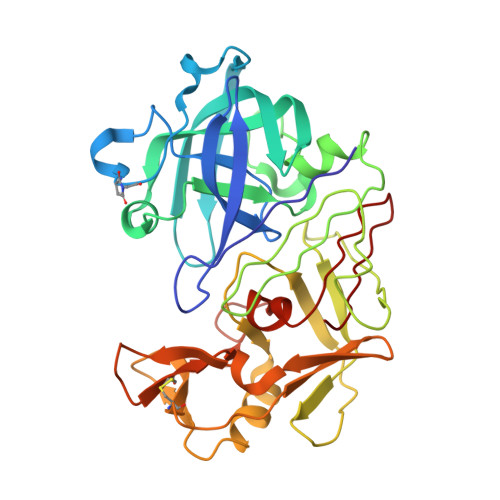The Catalytic Mechanism of an Aspartic Proteinase Explored with Neutron and X-Ray Diffraction
Coates, L., Tuan, H.-F., Tomanicek, S.J., Kovalevsky, A., Mustyakimov, M., Erskine, P., Cooper, J.(2008) J Am Chem Soc 130: 7235
- PubMed: 18479128
- DOI: https://doi.org/10.1021/ja801269x
- Primary Citation of Related Structures:
2JJI, 2JJJ, 2VS2 - PubMed Abstract:
Hydrogen atoms play key roles in enzyme mechanism, but as this study shows, even high-quality X-ray data to a resolution of 1 A cannot directly visualize them. Neutron diffraction, however, can locate deuterium atoms even at resolutions around 2 A. Both neutron and X-ray diffraction data have been used to investigate the transition state of the aspartic proteinase endothiapepsin. The different techniques reveal a different part of the story, revealing the clearest picture yet of the catalytic mechanism by which the enzyme operates. Room temperature neutron and X-ray diffraction data were used in a newly developed joint refinement software package to visualize deuterium atoms within the active site of the enzyme when a gem-diol transition state analogue inhibitor is bound at the active site. These data were also used to estimate their individual occupancy, while analysis of the differences between the bond lengths of the catalytic aspartates was performed using atomic resolution X-ray data. The two methods are in agreement on the protonation state of the active site with a transition state analogue inhibitor bound confirming the catalytic mechanism at which the enzyme operates.
Organizational Affiliation:
Spallation Neutron Source, Oak Ridge National Laboratory, 1 Bethel Valley Road, Oak Ridge, Tennessee 37831, USA.

















